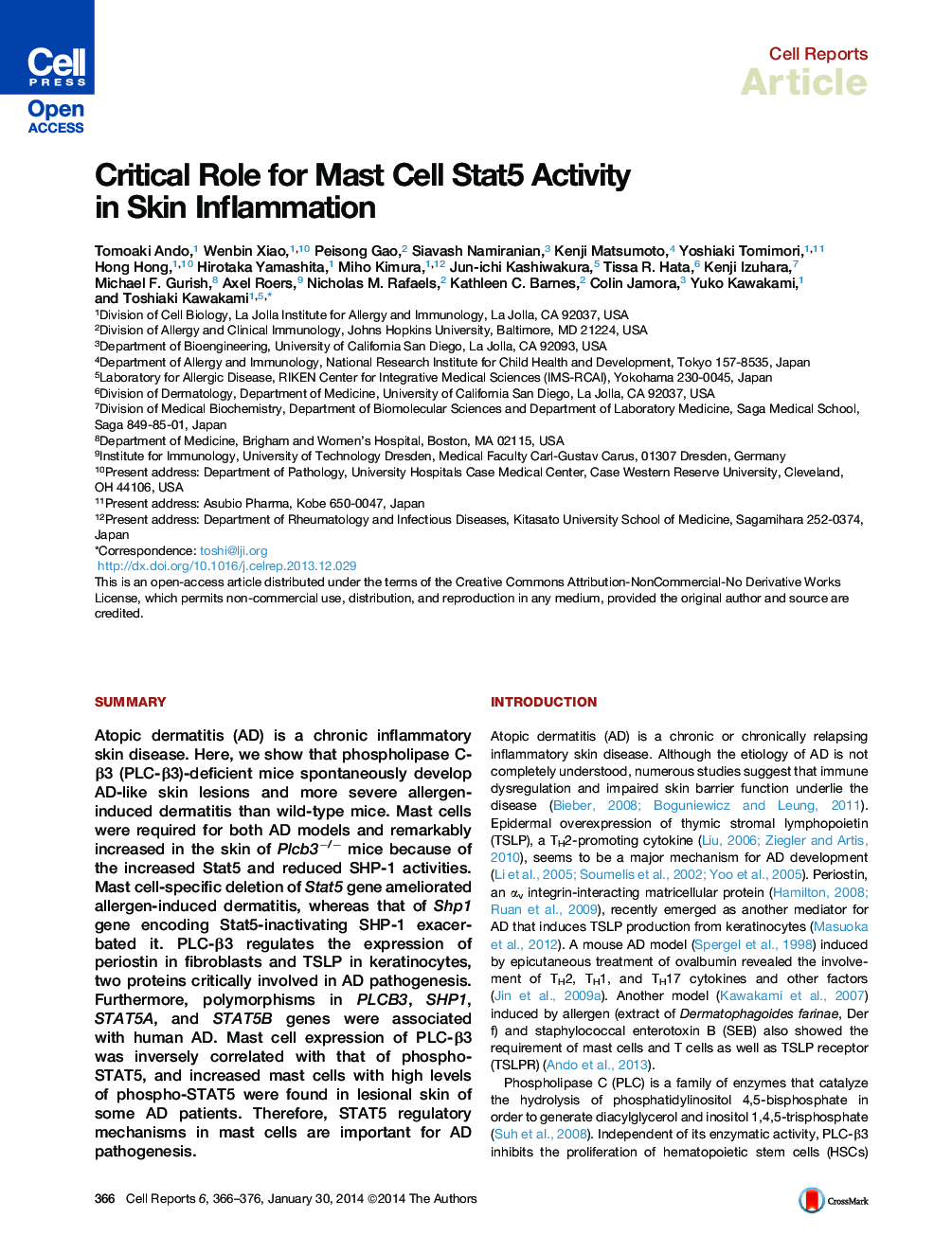| کد مقاله | کد نشریه | سال انتشار | مقاله انگلیسی | نسخه تمام متن |
|---|---|---|---|---|
| 2042430 | 1073197 | 2014 | 11 صفحه PDF | دانلود رایگان |
• PLCb3−/− mice develop AD spontaneously and severe allergen-induced dermatitis
• Stat5-dependent mast cells were increased and required for both AD models
• PLC-β3 represses expression of periostin in fibroblasts and TSLP in keratinocytes
• Mast cells with high nuclear phospho-STAT5 were found in lesions of AD patients
SummaryAtopic dermatitis (AD) is a chronic inflammatory skin disease. Here, we show that phospholipase C-β3 (PLC-β3)-deficient mice spontaneously develop AD-like skin lesions and more severe allergen-induced dermatitis than wild-type mice. Mast cells were required for both AD models and remarkably increased in the skin of Plcb3−/− mice because of the increased Stat5 and reduced SHP-1 activities. Mast cell-specific deletion of Stat5 gene ameliorated allergen-induced dermatitis, whereas that of Shp1 gene encoding Stat5-inactivating SHP-1 exacerbated it. PLC-β3 regulates the expression of periostin in fibroblasts and TSLP in keratinocytes, two proteins critically involved in AD pathogenesis. Furthermore, polymorphisms in PLCB3, SHP1, STAT5A, and STAT5B genes were associated with human AD. Mast cell expression of PLC-β3 was inversely correlated with that of phospho-STAT5, and increased mast cells with high levels of phospho-STAT5 were found in lesional skin of some AD patients. Therefore, STAT5 regulatory mechanisms in mast cells are important for AD pathogenesis.
Graphical AbstractFigure optionsDownload as PowerPoint slide
Journal: - Volume 6, Issue 2, 30 January 2014, Pages 366–376
